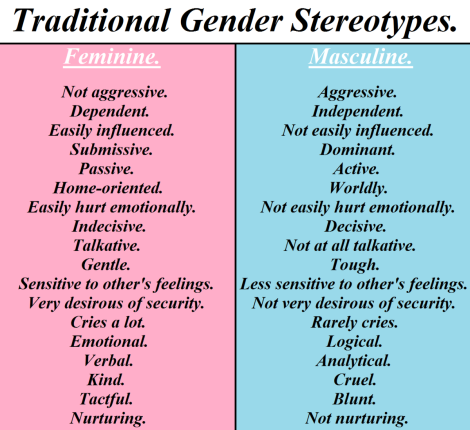
Credit: http://www.pinterest.com
“On ne naît pas femme, on le deviant” (cit: Simone de Beauvoir)
As shown in Post no. 2 (Gender Diversity for Economic Interest?) and on the basis of the results from many scientists, gender diversity is often implemented for economic reasons. Therefore, I doubt that the economization of gender differences can allow structural change and that stereotypes can be reduced. The reason for my concern can be traced back to Garfinkel’s ethnomethodological approach (1967) and Goffman’s arrangement of sexes (1994).
Harold Garfinkel (1967) shows how sex in the social anthropology – as something natural – is constructed by social expectations and stereotypes and is reproduced and confirmed by interactions. In contrast to Garfinkel (1967), Erving Goffman (1994) engaged with the arrangement of the sexes based on a coding method as well as the sex category in which he sees an interface to the social structure (Joas 2007: 294). Goffman’s central statement is that the organization of social institutions, such as the family or the labor market, constitute and reproduce gender differences (Goffman 1994, Joas 2007: 294). In contrast to Garfinkel (1967), Goffman investigated in the relationship between interaction and social structure, while ethnomethodology is concerned with the generation of gender differences as an ongoing performance of the acting individuals (Joas 2007: 294).
In summary, this means that “was wir ungefragt als definitives Wissen der Naturwissenschaft voraussetzen, ist in ethnomethodologischer Sicht der Alltagstheorie entliehen” (Joas 2007: 293). For this reason, Kessler and McKenna (1978) also doubt the natural existence of only two sexes (female and male), because “nicht das Wissen über biologisch-genetische Unterschiede verschafft im Alltag Klarheit, sondern erst die Vorstellung der Existenz von zwei und nur zwei Geschlechtern” (Joas 2007: 293).
I would like to point out that the conscious use of stereotypical gender differences for the benefit of the economic performance of business teams cannot reduce the outdated role images, cannot abolish stereotypes, and therefore cannot create a new as well as modern corporate culture and corporate structure. This becomes especially clear when teams are put together on the basis of gender differences, because they cannot be confirmed nor reproduced in the interaction of the sexes. Hence, gender diversity alone is not enough to create institutional change.
